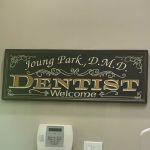- understanding-oral-bacterial-infections
- common-signs-of-oral-bacterial-infection
- causes-and-risk-factors
- importance-of-early-detection
- treatment-and-prevention
1. Understanding Oral Bacterial Infections
Oral bacterial infections occur when harmful bacteria in the mouth multiply uncontrollably, leading to issues such as gum disease, tooth decay, and even more severe complications if untreated. Our mouths naturally contain a diverse bacterial community, but an imbalance can trigger infections.
Such infections not only affect oral tissues but can also impact overall health, making awareness and early intervention vital.
2. Common Signs of Oral Bacterial Infection
2.1 Persistent Bad Breath
One of the earliest signs is chronic bad breath (halitosis) caused by bacterial buildup and decay.
2.2 Gum Inflammation and Bleeding
Red, swollen gums that bleed easily during brushing or flossing indicate gingivitis, a common bacterial infection.
2.3 Pain or Sensitivity
Localized tooth pain, sensitivity to hot or cold, or discomfort when chewing may signal an infection reaching the tooth root or surrounding tissues.
2.4 Pus or Abscess Formation
The appearance of pus, swelling, or abscesses near teeth or gums is a clear indication of bacterial infection requiring immediate attention.
2.5 Changes in Oral Tissues
Unusual sores, ulcers, or discoloration inside the mouth can also point to infection.
3. Causes and Risk Factors for Oral Bacterial Infections
Poor oral hygiene, smoking, diabetes, weakened immune systems, and diet high in sugar all contribute to bacterial overgrowth. Failure to regularly visit a dentist can also allow minor issues to escalate.
A real case involved Jane, who ignored mild gum bleeding for months until severe pain led her to seek help. Early treatment might have prevented the progression to a serious abscess.
4. Importance of Early Detection
Detecting signs of oral bacterial infection early is crucial to avoid complications like periodontitis or tooth loss. Regular dental check-ups and self-awareness of symptoms play key roles.
5. Treatment and Prevention
Treatment often involves professional cleaning, antibiotics, or minor surgical procedures. Maintaining proper oral hygiene—brushing twice daily, flossing, and using antibacterial mouthwash—helps prevent infections.
For personalized guidance and the best dental care products or services, visit Dentistry Toothtruth to ensure your oral health stays in top condition.







 Root Cause Dentistry- Biological Dentist0.0 (0 review)
Root Cause Dentistry- Biological Dentist0.0 (0 review) Next Generation Endodontics - Haverhill5.0 (19 review)
Next Generation Endodontics - Haverhill5.0 (19 review) HealthPartners Dental Clinic Blaine2.0 (36 review)
HealthPartners Dental Clinic Blaine2.0 (36 review) Westwind Dental Tolleson4.0 (262 review)
Westwind Dental Tolleson4.0 (262 review) Park Family and Cosmetic Dentistry5.0 (51 review)
Park Family and Cosmetic Dentistry5.0 (51 review) East Nashville Aesthetic Dentistry4.0 (281 review)
East Nashville Aesthetic Dentistry4.0 (281 review) The Importance of Oral Health Education During Pregnancy for a Healthy Pregnancy
The Importance of Oral Health Education During Pregnancy for a Healthy Pregnancy Best Tips for Brushing Your Teeth Properly for Healthy Gums: Essential Techniques for Oral Health
Best Tips for Brushing Your Teeth Properly for Healthy Gums: Essential Techniques for Oral Health Why Skipping Dental Checkups Can Lead to Bigger Oral Health Problems
Why Skipping Dental Checkups Can Lead to Bigger Oral Health Problems Advantages of Porcelain Dental Restorations
Advantages of Porcelain Dental Restorations How Can Diabetes Cause Tooth and Gum Problems? Preventing and Managing Oral Health Issues
How Can Diabetes Cause Tooth and Gum Problems? Preventing and Managing Oral Health Issues Healthy Habits for Promoting Good Oral Health and Hygiene: Tips for a Healthy Smile
Healthy Habits for Promoting Good Oral Health and Hygiene: Tips for a Healthy Smile